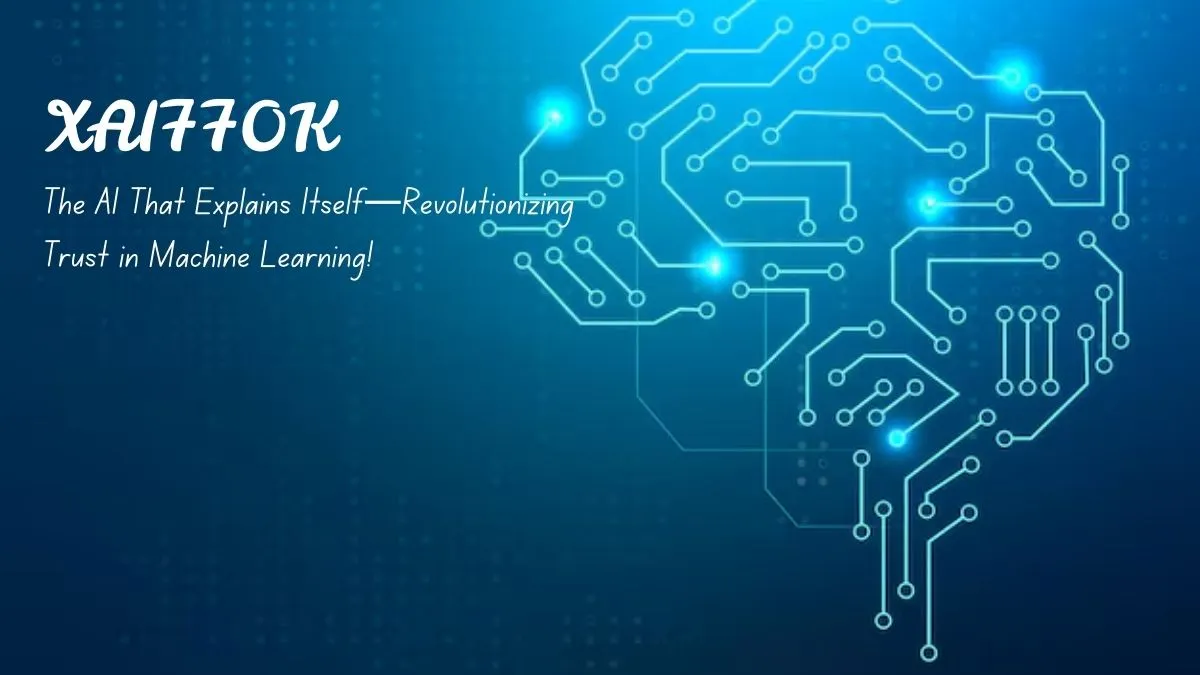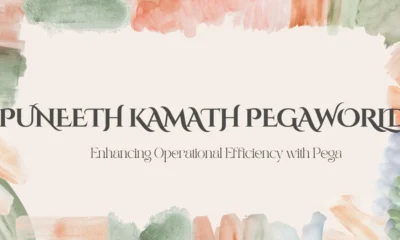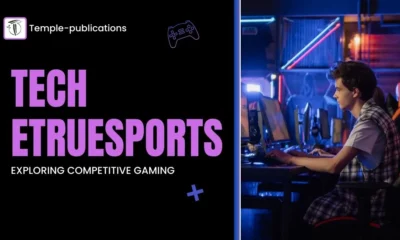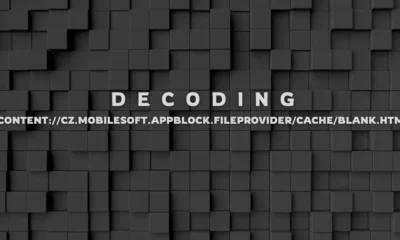TECHNOLOGY
XAI770K: The AI That Explains Itself—Revolutionizing Trust in Machine Learning!

AI is intelligent, but can you trust it? Most AI models make decisions in a black box, leaving users clueless. That’s where XAI770K steps in. It doesn’t just predict—it explains. Designed for transparency, it reveals the reasons behind every AI decision. Industries such as healthcare, finance, and marketing rely on AI, but without explainability, trust is shaky. XAI770K bridges that gap. It makes AI accountable. It’s not just about better predictions; it’s about understanding. Because if you don’t know how AI works, can you really trust it? This is the new age of machine learning—one where AI is no longer a mystery. Welcome to XAI770K, the AI that explains itself.
The Problem with Traditional Black-Box AI
AI is powerful, but it has a significant problem. Most AI models operate like magic tricks—you see the results but never the process. This lack of transparency creates major risks. In finance, AI can deny loans unfairly. In healthcare, it can misdiagnose patients. And in marketing? Biased ads can target the wrong people. No one knows why these decisions happen. That’s the issue with black-box AI. It’s unpredictable. It’s risky. XAI770K changes that. It eliminates the secrecy. It makes AI decisions understandable, reliable, and fair. Because without explainability, AI is just guesswork. And guesswork? It doesn’t belong in industries that affect lives and money.
What Makes XAI770K Different?
Transparency. That’s what sets XAI770K apart. Unlike traditional AI, it doesn’t simply produce results. It shows the logic behind them. Imagine a doctor using AI to diagnose a patient. Wouldn’t it be better if the AI explained its reasoning? XAI770K does just that. It highlights key factors, points out risks, and provides clear insights. No more blind trust in algorithms. No more unexplained predictions. Just AI that works with you, not against you. From finance to healthcare, businesses need AI they can trust. That’s why XAI770K is a game-changer. Because in today’s world, understanding AI decisions is just as important as making them.
How XAI770K Works: A Technical Breakdown
So, how does XAI770K work? It combines multiple explainability techniques: SHAP, LIME, counterfactual analysis—you name it. Instead of hiding behind complex mathematics, it breaks everything down. Let’s say an AI predicts that someone is at high risk for fraud. XAI770K will show why—maybe unusual transactions, location mismatches, or device changes. It doesn’t just produce an answer; it justifies it. This is real-time transparency. It’s AI that speaks your language. And the best part? It works without sacrificing performance. No more trade-offs between accuracy and explainability. With XAI770K, you gain both.
XAI770K in Healthcare: Saving Lives with Explainability
Healthcare is serious business. One wrong diagnosis can be life-threatening. That’s why XAI770K is a must-have in medical AI. Imagine an AI system detecting cancer. Instead of a simple “Yes” or “No,” XAI770K explains its reasoning. It highlights risk factors, past medical history, and data patterns. Doctors gain full clarity. They see what the AI sees. And that means better decisions with fewer mistakes. Trust in AI grows. Patients feel safer. And the medical industry finally gets an AI that doesn’t just predict; it explains. That’s not just innovation; that’s a revolution in patient care.
Financial Applications: Reducing Risk and Increasing Trust
Finance runs on trust. If people don’t trust AI-driven decisions, they won’t use them. Credit approvals, fraud detection, stock predictions—AI is everywhere in finance. But can you trust a system that won’t explain itself? XAI770K fixes that. It informs banks why a loan was denied. It explains why a transaction is suspicious. No more blind trust in AI-generated numbers. Regulators demand transparency. Customers demand fairness. And XAI770K delivers both. It’s the AI that makes finance smarter, safer, and more accountable. That’s why financial institutions are turning to XAI770K—because trust isn’t optional; it’s everything.
Marketing and Consumer AI: Personalization with Accountability
Marketing runs on data. The more you know about a customer, the better your ads can be. But here’s the problem—AI-driven marketing often feels creepy. Why did you see that ad? How does AI know what you like? With XAI770K, there’s no mystery. It explains why you’re receiving certain recommendations. It shows businesses how AI targets customers. Ethical marketing starts with transparency. People want personalized experiences, but they also want control. XAI770K balances both. No more hidden algorithms. No more confusing ad strategies. Just AI-powered marketing that makes sense.

Regulatory and Ethical Implications of Explainable AI
Governments are cracking down on AI. Transparency laws are becoming stricter. If companies don’t comply, they risk fines—or worse. XAI770K is designed for this new era. It ensures compliance with GDPR, CCPA, and other regulations. Ethical AI isn’t a trend; it’s a requirement. Customers demand it. Regulators enforce it. Businesses need it. XAI770K keeps AI accountable, compliant, and ethical. No more regulatory nightmares. No more lawsuits over biased AI. Just clear, explainable, and responsible AI decision-making.
Challenges in Explainable AI and How XAI770K Overcomes Them
Explainable AI isn’t easy. Traditional models sacrifice accuracy for transparency. Others struggle to explain deep learning decisions. XAI770K addresses this. It balances performance and interpretability. It simplifies explanations without losing depth. Bias? It detects and mitigates it. Complexity? It breaks it down. Other AI models struggle with these challenges. It turns them into strengths. That’s why it’s the future of explainable AI. Comparing it with Other Explainable AI Solutions. There are other XAI solutions available. However, they all have flaws. Some are too complex. Others lack depth. XAI770K stands out. It’s fast, accurate, and transparent. It doesn’t just explain AI decisions—it enhances them. Compared to other models, it provides more clarity, better insights, and real-time decision-making. It’s not just another XAI tool; it’s the best one.
The Future of XAI770K and Explainable AI
AI is evolving. Explainability is the future. But not all AI models will keep up. XAI770K is ahead of the curve. More industries will adopt it. More regulations will require it. AI without transparency won’t survive. That’s why XAI770K is leading the charge. It’s shaping the next generation of machine learning. One where AI isn’t just smart. It’s understandable.
Conclusion
The future of AI isn’t about making predictions. It’s about explaining them. That’s what XAI770K does best. It makes AI transparent, reliable, and trustworthy. Businesses, regulators, and customers all demand explainability. And with XAI770K, they get it. AI doesn’t have to be a mystery. It can be clear, fair and accountable. That’s the revolution XAI770K brings. The age of black-box AI is over. The future? It’s explainable. And it starts with XAI770K.
-

 BIOGRAPHY6 months ago
BIOGRAPHY6 months agoBehind the Scenes with Sandra Orlow: An Exclusive Interview
-

 HOME1 year ago
HOME1 year agoDiscovering Insights: A Deep Dive into the //vital-mag.net blog
-

 HOME1 year ago
HOME1 year agoSifangds in Action: Real-Life Applications and Success Stories
-

 BIOGRAPHY1 year ago
BIOGRAPHY1 year agoThe Woman Behind the Comedian: Meet Andrew Santino Wife




























